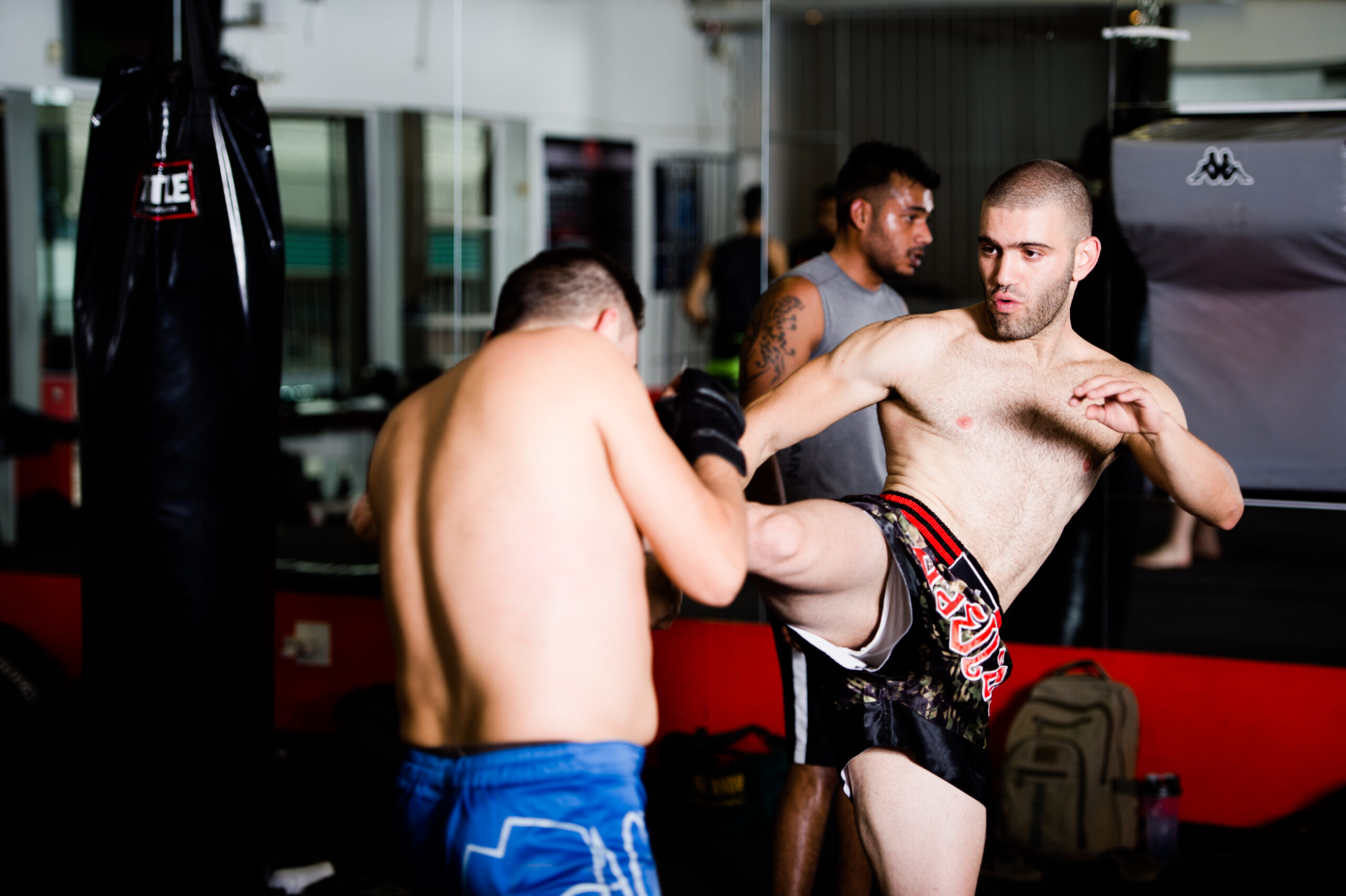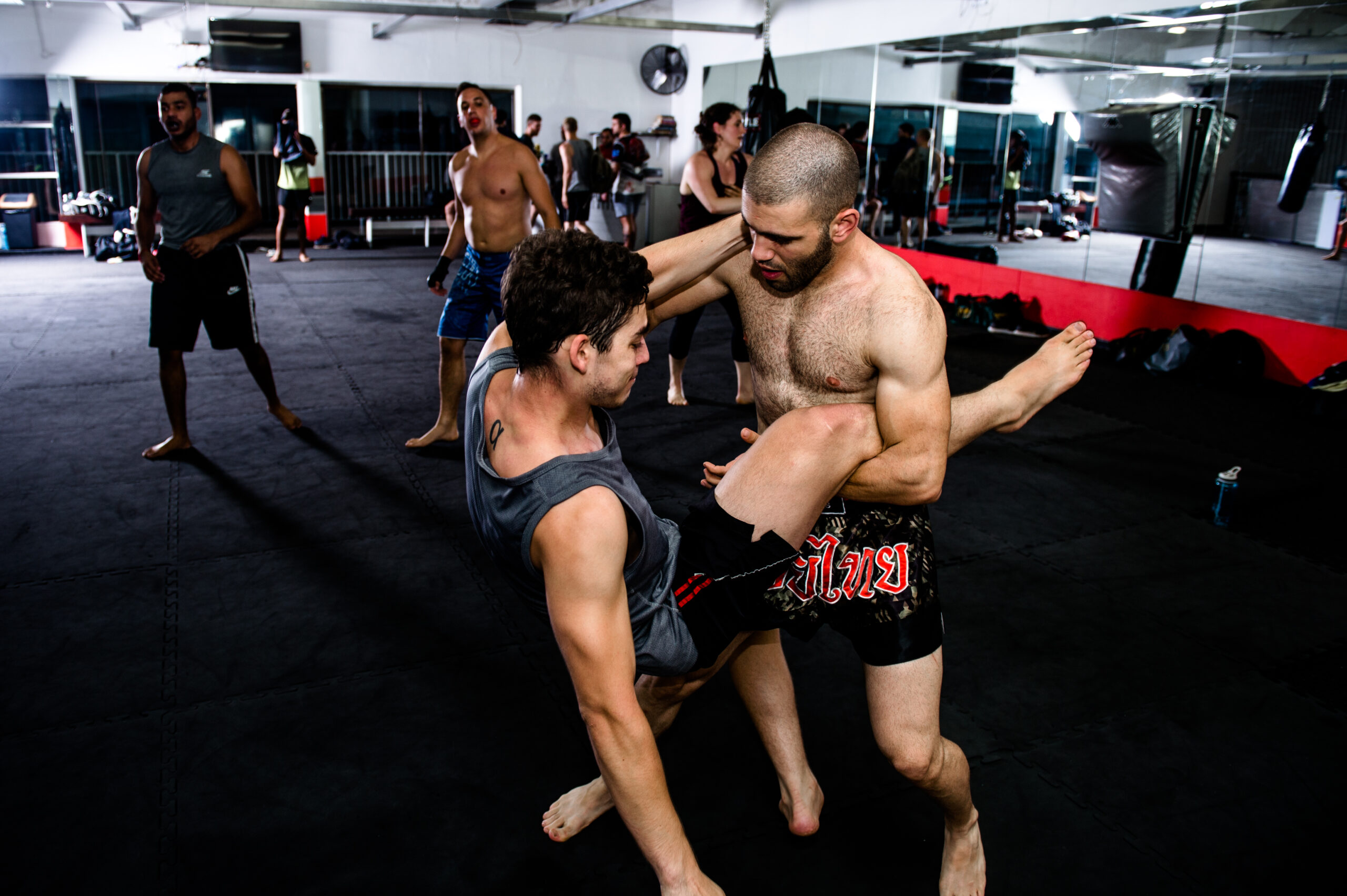No products in the cart.
Unveiling the Transformative Impact of Combat Sports on Physical Fitness and Body Composition
Introduction:
Combat sports have transcended their origins as mere forms of self-defence or competitive activities and emerged as holistic platforms for physical fitness and body composition transformation. This comprehensive exploration delves into the myriad ways in which engaging in combat sports can sculpt your physique, enhance cardiovascular health, and optimise body composition. From the dynamic demands of striking disciplines like Muay Thai to the ground-based mastery of Brazilian Jiu-Jitsu, each combat sport offers unique benefits that go beyond the aesthetic, contributing to a healthier, more resilient body.
Section 1: The Cardiovascular Advantage
A. Intense Cardiovascular Training
Combat sports are synonymous with high-intensity training, pushing practitioners to elevate their heart rates consistently. The cardiovascular demands vary across disciplines, with boxing emphasising explosive bursts of energy, Muay Thai incorporating full-body movements, and Wrestling/BJJ relying on sustained efforts. This diversity ensures a comprehensive cardiovascular workout, promoting heart health, and enhancing endurance.
B. Improved Circulation and Oxygenation
The rigorous training involved in combat sports enhances blood circulation, ensuring that oxygen is efficiently transported to muscles. Improved oxygenation supports endurance, delays fatigue, and accelerates recovery. As practitioners engage in prolonged and intense sessions, their cardiovascular systems adapt, leading to long-term benefits such as reduced resting heart rates and improved overall cardiovascular health.
Section 2: Muscular Strength and Power Development
A. Full-Body Engagement
Combat sports require the activation of various muscle groups simultaneously. Striking disciplines like boxing and kickboxing engage the upper body, core, and lower body, promoting balanced muscle development. Grappling sports such as Brazilian Jiu-Jitsu demand strength and flexibility in both the upper and lower extremities. This holistic engagement ensures that no muscle group is neglected, fostering overall muscular strength.
B. Plyometric Training
The explosive movements inherent in combat sports, such as throwing a powerful punch or executing a quick takedown, involve plyometric actions. Plyometric training enhances muscle power by focusing on rapid contraction and extension of muscles, contributing to increased athletic performance and functional strength. This explosive power is not only advantageous in the context of the sport but also translates into improved daily activities and overall physical prowess.
C. Core Strength and Stability
A strong core is the foundation of athletic performance, and combat sports place a significant emphasis on core engagement. Whether delivering a strike, defending against an opponent, or executing ground techniques, a stable core is crucial. The consistent activation of core muscles during training not only enhances performance in the sport but also leads to improved posture, reduced risk of injury, and a sculpted midsection.
Section 3: Flexibility and Range of Motion
A. Dynamic Movements
Combat sports involve a wide range of dynamic movements, from quick footwork to fluid striking and grappling techniques. The continuous and varied nature of these movements promotes flexibility and an increased range of motion. Over time, practitioners experience improved joint mobility, reducing the risk of injuries and enhancing overall agility.
B. Stretching and Mobility Drills
Many combat sports incorporate stretching and mobility drills as an integral part of training. These exercises target specific muscle groups, promoting flexibility and preventing muscle tightness. Regular participation in combat sports not only maintains joint health but also contributes to a supple and adaptable body capable of performing complex movements with ease.
Section 4: Weight Management and Body Composition
A. Caloric Expenditure
The high-intensity nature of combat sports leads to substantial caloric expenditure during training sessions. Whether engaged in sparring, drilling, or conditioning, practitioners burn a significant number of calories. This caloric deficit, when combined with a balanced diet, contributes to weight management and fat loss, making combat sports an effective tool for those seeking to achieve or maintain a healthy body composition.
B. Lean Muscle Development
Combat sports promote the development of lean muscle mass. The combination of resistance training, plyometrics, and cardiovascular conditioning encourages the growth of functional and metabolically active muscle tissue. Unlike traditional weightlifting, which may focus solely on isolated muscle groups, combat sports foster a more holistic approach to muscle development, contributing to a well-proportioned and aesthetically pleasing physique.
C. Enhanced Metabolism
Regular participation in combat sports has a positive impact on metabolism. The intense and varied training sessions elevate the resting metabolic rate, leading to increased calorie burning even at rest. This metabolic boost is conducive to weight management and body composition optimization, providing a sustainable approach to achieving and maintaining a healthy weight.
Section 5: Mental and Emotional Well-being
A. Stress Reduction
The physical demands of combat sports, coupled with the mental focus required during training, create a powerful stress-reducing effect. The release of endorphins during exercise contributes to an improved mood, reduced stress levels, and enhanced overall well-being. The meditative aspect of repetitive movements, such as shadowboxing or drilling techniques, adds a therapeutic element to combat sports.
B. Discipline and Motivation
Success in combat sports is closely tied to discipline and consistent effort. The commitment required to progress through the ranks or improve skills fosters mental discipline and resilience. These attributes extend beyond the gym, positively influencing other aspects of life. The motivation to achieve goals in the sport often translates into a proactive approach to personal and professional challenges.
C. Confidence and Self-esteem
The physical transformation resulting from combat sports has a profound impact on self-esteem and confidence. As practitioners witness improvements in strength, endurance, and body composition, they gain a heightened sense of self-worth. Additionally, the mastery of self-defense techniques and the ability to navigate challenging training sessions contribute to increased confidence in one’s physical capabilities.
Section 6: Conclusion
In conclusion, the physical and body composition benefits of engaging in combat sports are vast and multifaceted. From cardiovascular health and muscular strength to flexibility, weight management, and mental well-being, these disciplines offer a comprehensive approach to physical fitness. The transformative impact goes beyond the aesthetic, providing individuals with a holistic and sustainable means of achieving a healthier and more resilient body. As the popularity of combat sports continues to rise, so too does the recognition of their positive influence on overall well-being, making them a compelling choice for those seeking a dynamic and effective approach to fitness and body composition optimization. Whether you’re a seasoned athlete or a beginner looking for a transformative fitness journey, the world of combat sports offers a pathway to physical excellence and overall wellness.








Leave a Reply